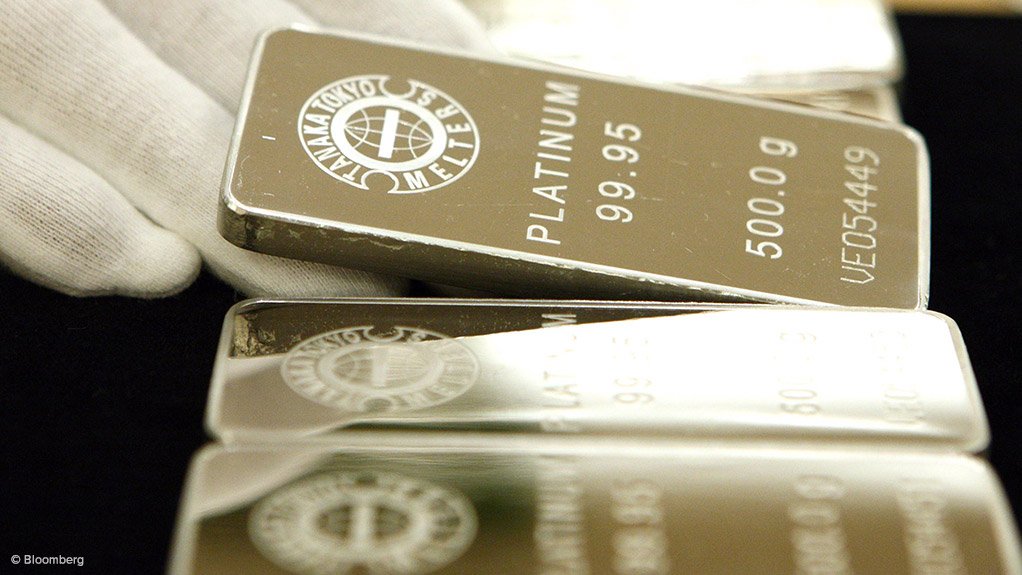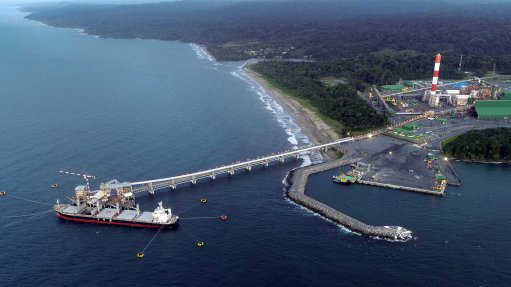Palladium, platinum prices lift amid volatile mining sector
JOHANNESBURG (miningweekly.com) – As hopes of a resolution to the crippling five-month strike in the platinum sector diminished this week, platinum and palladium prices showed some increases.
Palladium prices on Tuesday jumped to their highest level since February 2011 at $854/oz, while platinum prices, which had mostly been stagnant since the start of the strike, rallied to $1 482/oz, before stabilising at about $1 475/oz.
However, pricing was unlikely to surpass recent highs, despite South Africa’s longest and most damaging strike idling 60% of the nation’s platinum-group metals (PGM) output and impacting 45% of global supply.
By the end of this week, the Association of Mineworkers and Construction Union- (AMCU-) led strike, impacting on Lonmin, Impala Platinum (Implats) and Anglo American Platinum (Amplats), would cost about 30% of the year’s output, leading to a heavy reliance on stockpiles.
Talks aimed at ending the protracted labour unrest deadlocked once again this week, with no resolution in sight after new Mineral Resources Minister Advocate Ngoako Ramatlhodi bowed out of the negotiations.
“[There] may be a little further upside [to the prices] but we still do not see it breaking out of recent highs in the short run … given [the] still present inventories and moderately depressed demand, [in addition to the] high recycled input to the market,” Nomura economist Peter Attard Montalto told Mining Weekly Online in an email on Wednesday.
Cadiz economist Peter Major told Mining Weekly that in addition to the 25% supply from recycling, the platinum market was already in oversupply, which had kept the prices low.
He estimated that, currently, there were likely to be about five-million to six-million ounces – official and unofficial – in platinum inventories worldwide.
“We have about a year’s worth of supply,” Major noted.
The output of platinum had been increasing steadily over the past ten years, with South Africa the dominant, but not the only, producer.
In addition to 10% PGM output sourced from Russia and 25% sourced from recycling, some platinum producers, mostly smaller operations in South Africa, which usually accounted for 54% of the eight-million ounces a year supply, continued production.
Further, Implat’s continued to generate a significant output from its Zimbabwe operations, with about 60% of its PGM output impacted by the strike.
Of the 8.8-million ounces a year of palladium supply, South Africa only accounted for 30%, with Russia and North America accounting for 31% and 10% respectively, boosted by 26% recycled supply.
In its latest quarterly commodities report, released in April, Standard Bank had forecast an 815 000 oz platinum supply deficit for 2014 as a whole and a palladium deficit of more than 1.5-million ounces.
However, platinum prices, forecast at $1 470/oz, were not expected to rise materially for the year as a whole, owing to high levels of above-ground inventories.
The bank’s 2014 palladium forecast had been revised upwards to $785/oz, owing to supply pressures, the introduction of palladium exchange-traded funds and rising geopolitical tensions involving Russia, the world’s leading palladium producer.
Mining Weekly previously reported that Standard Bank’s platinum price outlook for 2015, 2016 and 2017 was $1 725/oz, $1 950/oz and $2 063/oz respectively, while it expected palladium prices to rise to $875/oz, $938/oz and $975/oz over the same time horizon.
Major, however, believed that the prices would drop owing to the industry oversupply.
“The platinum price was on its way down,” he explained, saying that the strike was holding the price steady and, should it end in the short-term, the price would continue its decline.
However, an even more protracted strike would push the price about $50/oz higher a month.
“The key kicker [to push prices] higher will be the eventual confirmed decisions of the producers to restructure and lay off workers in the Rustenburg [area], but that may well be several months off, even if the process starts sooner,” added Attard Montalto.
The platinum producers, on several occasions, warned that AMCU’s wage demands were unaffordable and unsustainable, indicating, but not confirming, that the protracted strike would lead to extensive restructuring efforts and the mothballing of shafts to get back on track.
Lonmin, which remained the most exposed, with all of its mining operations impacted by the strike, was expected to embark on its third capital raising in as many years to survive the strike.
The unions remained “unwilling to face the economic realities” of their wage demands, while the platinum producers were “unwilling to gamble” on a higher PGMs rand basket.
“We remain very bearish on the situation, given the companies now have to consider taking the next more drastic steps to survive,” Liberum said in a statement.
Amplats, despite a more diversified portfolio, was also being heavily impacted with 40% of its production offline.
Ramatlhodi admitted that he expected widespread job cuts as the platinum producers, particularly Lonmin, restructured to bounce back, and the delivery of the R12 500 basic wages demanded by AMCU in the timeline specified would require the shutdown of shafts.
“The situation is grave and quite serious,” he told a media briefing on Tuesday.
Comments
Press Office
Announcements
What's On
Subscribe to improve your user experience...
Option 1 (equivalent of R125 a month):
Receive a weekly copy of Creamer Media's Engineering News & Mining Weekly magazine
(print copy for those in South Africa and e-magazine for those outside of South Africa)
Receive daily email newsletters
Access to full search results
Access archive of magazine back copies
Access to Projects in Progress
Access to ONE Research Report of your choice in PDF format
Option 2 (equivalent of R375 a month):
All benefits from Option 1
PLUS
Access to Creamer Media's Research Channel Africa for ALL Research Reports, in PDF format, on various industrial and mining sectors
including Electricity; Water; Energy Transition; Hydrogen; Roads, Rail and Ports; Coal; Gold; Platinum; Battery Metals; etc.
Already a subscriber?
Forgotten your password?
Receive weekly copy of Creamer Media's Engineering News & Mining Weekly magazine (print copy for those in South Africa and e-magazine for those outside of South Africa)
➕
Recieve daily email newsletters
➕
Access to full search results
➕
Access archive of magazine back copies
➕
Access to Projects in Progress
➕
Access to ONE Research Report of your choice in PDF format
RESEARCH CHANNEL AFRICA
R4500 (equivalent of R375 a month)
SUBSCRIBEAll benefits from Option 1
➕
Access to Creamer Media's Research Channel Africa for ALL Research Reports on various industrial and mining sectors, in PDF format, including on:
Electricity
➕
Water
➕
Energy Transition
➕
Hydrogen
➕
Roads, Rail and Ports
➕
Coal
➕
Gold
➕
Platinum
➕
Battery Metals
➕
etc.
Receive all benefits from Option 1 or Option 2 delivered to numerous people at your company
➕
Multiple User names and Passwords for simultaneous log-ins
➕
Intranet integration access to all in your organisation





















